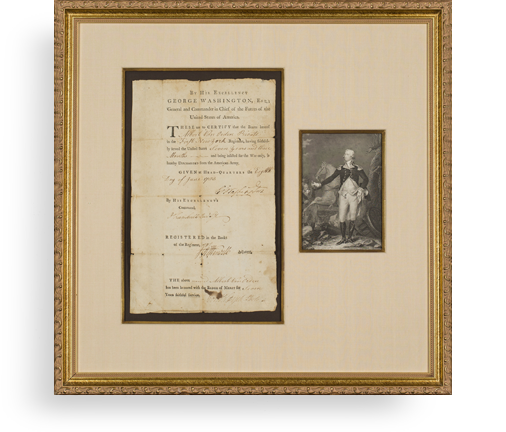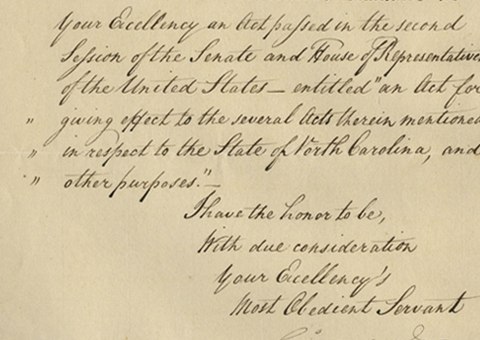Sold – Secretary of War Henry Knox Orders the Rifles That Were Later Used by Lewis and Clark on Their Expedition

A presidential decree in 1792 created the Legion of the United States for the purpose of subduing the Indian tribes of the Northwest, and it was placed under the command of Gen. Anthony Wayne. A battalion of riflemen was part of that Legion, and the government needed to place orders for the...
A presidential decree in 1792 created the Legion of the United States for the purpose of subduing the Indian tribes of the Northwest, and it was placed under the command of Gen. Anthony Wayne. A battalion of riflemen was part of that Legion, and the government needed to place orders for the long arms to outfit the unit. Secretary of War Henry Knox contacted Gen. Edward Hand of Lancaster, Pennsylvania to procure these rifles for the army. Knox wrote Hand on Jan 4, 1792, saying "As you are experienced in this business, I shall take the liberty of relying solely on your inspection and judgement of them…"
In Hand, Knox knew he had a trustworthy man. Hand served as an officer under Lafayette, then was appointed Adjutant General of the Continental Army. He served at Yorktown, and in recognition of his long and distinguished service, he was, in September 1783, promoted to major general. After the war he was engaged in the manufacture of rifles at Lancaster.
A prototype rifle was made for Knox's approval, and in a letter dated Feb 4, 1792 to Hand, Knox gave the go ahead for a rifle with a 42" barrel bored 40 balls to the pound, a fly in the tumbler of the Lock, the trigger, side and breech pins to be hardened, the stock to be seasoned maple, and the catch spring release to be high so as to be more accessible to the thumb. The government was to pay $12 apiece for them. The initial contract was for 500 rifles, but Knox lost no time in extending the amount of the order substantially. In the end, 1,476 rifles were purchased by the government in 1792.
Autograph letter signed, War Department, Washington, February 11, 1792, to Gen. Edward Hand, reporting on the government orders of rifles pursuant to this contract and increasing the order. "I have received yours of the 7th instant. I depend upon you for 650 rifles. In addition to which we have formed contracts in Reading for 300 and in this city for 300, making 1250. But besides all these I am desirous of obtaining three or five hundred more. The contract shall be sent to you the next post." Hand has docketed on the verso, "Secy. of War, 11 Feby 1792." On February 23 Hand wrote Knox discussing the effect of severe weather on the production of gun barrels. On March 13, he informed Knox that 50 rifles were already being forwarded to Pittsburgh.
An inventory taken on April 6, 1801 at Harpers Ferry Armory, and it listed 382 of these rifles in store. Meriwether Lewis arrived there on March 1803. In his historical study of the Lewis and Clark on their expedition and their arms states, S.K. Weir states on "convincing evidence" that these same 1792 rifles were the guns Lewis and Clark utilized. Firearms proved essential to the success of the Lewis and Clark Expedition. They were used daily for hunting for food, and for natural history collections. Traveling across an unmapped and unknown wilderness, remote from familiar sources of aid and supply, guns were one of the indispensable tools of the explorers.
It is interesting to note that the 1792 rifle is highly collectible, and is rarest of all government procured rifles.

Frame, Display, Preserve
Each frame is custom constructed, using only proper museum archival materials. This includes:The finest frames, tailored to match the document you have chosen. These can period style, antiqued, gilded, wood, etc. Fabric mats, including silk and satin, as well as museum mat board with hand painted bevels. Attachment of the document to the matting to ensure its protection. This "hinging" is done according to archival standards. Protective "glass," or Tru Vue Optium Acrylic glazing, which is shatter resistant, 99% UV protective, and anti-reflective. You benefit from our decades of experience in designing and creating beautiful, compelling, and protective framed historical documents.
Learn more about our Framing Services









































































































